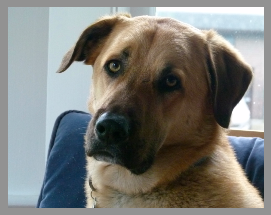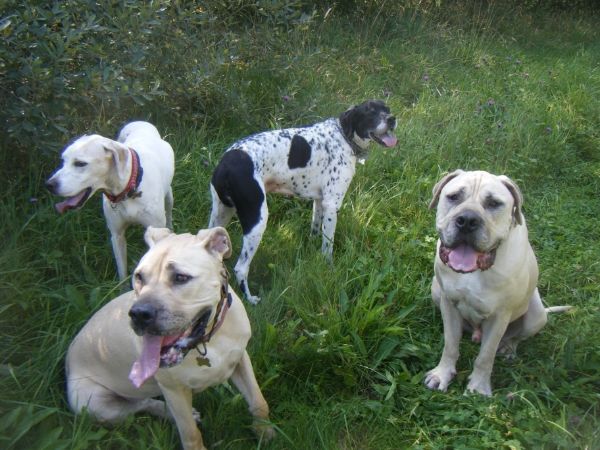Jethro continues to improve my handling skills with his quick 'corrections' for the errors I make. I thought it might be a good idea to summarize what I have learned so far:
1. Triangulate my approach to bringing up my reactive/aggressive doggie - 1) manage the environment to keep his reactions below threshold whenever and where ever possible; 2) practice OB anywhere and everywhere, keep upping the ante of challenges for OB play and intensity of distraction; 3) work on desensitizing by watching for threshold cues and working OB just below or well below his limit.
2. A hungry dog is much more willing to focus and engage, especially when you have fresh boiled pork liver bits in your pouch.
3. Don't make life too easy - make him work for his food, for his rest, for his play.
4. Always, always follow through on a command. Never let him ignore a command.
5. Be generous with rewards when he follows through on a command, especially any commands that involve recall/engagement from environmental distractions.
6. Speak in a gentle voice. Extreme voices are arousing in and of themselves. If I want a calm dog, he needs to hear a calm, quiet voice. It is amazing how quiet I can make a sound that he responds to. Loud, aggressive voice does not help at all. High pitched, squeeky voice is arousing, if I want him to get excited.
7. Reward calmly moving away from distractions.
8. Reward looking at me after looking at a potential trigger.
9. Anticipate triggers and implement evasive actions before he has a chance to even think about charging.
10. Sudden environmental changes that can trigger a reaction can be visual, auditory, and scents. Any trigger needs to be managed, OBed, and desensitized. He won't stop reacting if he doesn't build up a history of non-reaction. If I am thinking, "I wonder if this is going to send him over the top," consider it already done and take action before he has his reaction.
11. Consistency is crucial.
12. For Jethro, a lot of variety is not a good thing. He finds it challenging managing the known environment around our home and neighbourhood. Putting him in a lot of different situations does not help him cope with the familiar situations. A little bit of variety can be a lot less variety than I previously thought.
13. Running with my dog on a loose leash is a super way to bond first thing in the morning.
14. Whenever we cross a threshold: doorstep, gate, curb, Jethro has to sit and wait to be invited to proceed. This served us well the other day when our carpenter was in the yard and I made the mistake of leaving Jethro loose in the house, with the front door open and the porch gate open. Jethro could have peeled out of the house, down the steps and attacked the carpenter. Instead, he sat at the top of the steps waiting for instructions. My husband easily called him back inside without incident.
We are definitely a work in progress. Jethro continues to surprise me with his ability to work with me and challenge his own reactivity, and also, how scary and dangerous he is capable of being, left to his own devices. Yup. He is a handful. He also has a great sense of humour, he is loyal, and a wonderful companion.
 Previous Topic
Previous Topic Index
Index Next Topic
Next Topic













 Top
Top









.jpg)